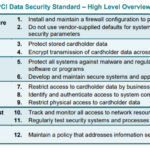In the ever-evolving world of technology, the integration of emerging technologies like blockchain into antivirus software has become a fascinating phenomenon. This seamless combination has paved the way for enhanced security measures, offering users a unique and secure experience. By harnessing the power of blockchain, antivirus software now possesses the ability to detect and prevent increasingly sophisticated cyber threats, making it an indispensable tool in safeguarding our digital lives. Join us as we embark on a journey to explore the world of antivirus software and discover how the integration of blockchain is revolutionizing the landscape of cybersecurity.
Understanding Blockchain Technology
Definition and explanation of Blockchain
Blockchain is a decentralized and distributed digital ledger technology that allows multiple parties to have a synchronized and transparent record of transactions or data. In simple terms, it is a chain of blocks where each block contains a list of transactions. Unlike traditional centralized systems, blockchain operates on a peer-to-peer network, ensuring transparency, immutability, and security.
How Blockchain works
Blockchain operates through a consensus mechanism, where all participating nodes in the network validate and agree upon the transactions. Each block contains a unique identifier called a hash, which is generated based on the data within the block and the hash of the previous block. This creates a chain-like structure that ensures the integrity and immutability of the data.
Transactions within the blockchain are grouped into blocks, and once a block is added to the chain, it becomes permanent and cannot be modified. The distributed nature of the blockchain ensures that no single entity has control over the entire network, reducing the risk of hacking or tampering.
Application areas of Blockchain
Blockchain technology has found numerous applications beyond its initial use in cryptocurrencies like Bitcoin. Some notable areas where blockchain is being utilized include:
-
Financial Services: Blockchain is revolutionizing the financial industry by enabling secure and transparent transactions, eliminating intermediaries, and reducing costs.
-
Supply Chain Management: Blockchain can improve traceability and accountability in supply chains, enhancing efficiency and reducing fraud.
-
Healthcare: Blockchain can facilitate secure sharing of patient data, streamline medical records management, and improve patient privacy.
-
Voting Systems: Blockchain can ensure transparency and immutability in voting systems, preventing fraud and ensuring accurate results.
-
Intellectual Property: Blockchain can provide a decentralized platform for verifying ownership and protecting intellectual property rights.
-
Internet of Things (IoT): Blockchain can enhance security and data integrity in IoT devices by providing a trusted and decentralized system for data exchange.
In summary, blockchain technology has the potential to disrupt various industries by providing secure, transparent, and decentralized solutions to complex problems.
Concept of Antivirus Software
Definition and explanation of Antivirus
Antivirus software, also known as anti-malware software, is a crucial tool in protecting computer systems from malicious software threats such as viruses, worms, ransomware, Trojans, and spyware. It works by detecting and removing these threats, thus preventing potential damage to the system, data loss, and privacy breaches.
Functions of Antivirus Software
Antivirus software performs several functions to ensure the security of computer systems:
-
Real-time Scanning: Antivirus software continuously monitors the system and scans files, programs, and incoming data for any malicious code or suspicious activity.
-
Malware Detection: It utilizes various detection methods, including signature-based detection, heuristic analysis, and behavioral monitoring, to identify known and unknown malware threats.
-
Quarantine and Removal: When a malware threat is detected, antivirus software isolates it in a quarantine area to prevent it from causing any harm and then removes it from the system.
-
Regular Updates: Antivirus software regularly updates its virus database to include new malware signatures, ensuring it can detect the latest threats.
-
Firewall Protection: Many antivirus software also includes firewall functionality to prevent unauthorized access to the system and block potentially malicious network traffic.
How Antivirus Software works
Antivirus software applies different techniques to detect and neutralize malware threats:
-
Signature-based Detection: This traditional method involves comparing the files and programs on the system against a database of known malware signatures. If a match is found, the antivirus software identifies and removes the threat.
-
Heuristic Analysis: Antivirus software uses heuristic algorithms to analyze the behavior of files and programs. If a file exhibits suspicious behavior, such as modifying system settings or replicating itself, it is flagged as a potential threat.
-
Behavioral Monitoring: Some advanced antivirus software monitors the behavior of programs in real-time, looking for patterns of suspicious activity. If a program exhibits malicious behavior, it is blocked or removed.
-
Sandboxing: Antivirus software may use sandboxing techniques to isolate potentially malicious files and programs in a secure environment. This allows the antivirus to observe their behavior without risking system compromise.
In summary, antivirus software employs a combination of signature-based detection, heuristic analysis, behavioral monitoring, and other techniques to identify and eliminate malware threats, ensuring the security and integrity of computer systems.
The Need for Integration of Blockchain in Antivirus Software
Limitations of Current Antivirus Solutions
While antivirus software has been effective in combating malware threats, it is not without limitations. Some key limitations include:
-
Centralized Database: Current antivirus solutions rely on a centralized database for storing malware signatures. This creates a single point of failure, making it vulnerable to attacks and reducing the effectiveness of the software.
-
False Positives/Negatives: Antivirus software can incorrectly identify legitimate files as threats (false positives) or fail to detect new and unknown malware (false negatives). This can lead to inconvenience for users and increased risk of malware infections.
-
Lack of Transparency: Most antivirus solutions operate as closed systems with limited transparency. Users have limited visibility into the inner workings of the software and how it protects their systems, making it difficult to trust the software completely.
Introduction to the concept of integrating Blockchain and Antivirus
The integration of blockchain technology with antivirus software aims to address the limitations of current solutions and enhance the overall security and effectiveness of the antivirus software. By leveraging the decentralized nature of blockchain, the integration can provide improved malware detection, secure storage of malware signatures, and increased transparency.
Potential benefits of Blockchain integration into Antivirus Software
Integration of blockchain technology in antivirus software presents several potential benefits:
-
Enhanced Security: The decentralized nature of blockchain ensures that malware signatures and detection data are stored securely across multiple nodes, reducing the risk of database breaches and tampering.
-
Immutable Malware Signatures: With blockchain integration, malware signatures can be stored as transactions in the blockchain, making them immutable and resistant to modification or deletion by hackers.
-
Distributed Threat Intelligence: Blockchain integration allows antivirus software to access a distributed network of threat intelligence, enabling faster detection of new and emerging malware threats.
-
Transparency and Trust: Blockchain provides a transparent and auditable record of malware detection and removal actions, giving users and organizations greater confidence in the antivirus software.
-
Incentivized Participation: The integration of blockchain can create a token economy, where users and security experts are incentivized to contribute to the detection and removal of malware by earning rewards or tokens.
In conclusion, integrating blockchain technology into antivirus software has the potential to enhance security, improve malware detection, and increase transparency, thereby addressing the limitations of current antivirus solutions.
Emerging Technologies and Antivirus Software
General Impact of Emerging Technologies on Antivirus software
Emerging technologies, including artificial intelligence (AI), machine learning, big data analytics, and cloud computing, are revolutionizing the field of antivirus software. These technologies are enabling antivirus solutions to become more advanced, effective, and adaptive, keeping up with the ever-evolving threat landscape.
AI and machine learning algorithms can analyze vast amounts of data and identify patterns that may indicate malware activity. This allows antivirus software to detect and block new threats more effectively and accurately without relying solely on signature-based detection.
Big data analytics enables antivirus software to process and analyze large datasets, identifying trends, and patterns that signify potential malware threats. This helps in proactive threat hunting and the development of robust security measures.
Cloud computing allows antivirus software to harness the power of distributed computing resources, enabling faster scanning, real-time updates, and more efficient threat detection. Cloud-based antivirus solutions also provide scalability and flexibility to adapt to changing needs.
Specific Technological Advancements influencing Antivirus Software
-
AI-assisted Threat Detection: AI algorithms can analyze behavioral patterns, network traffic, and file characteristics to identify potential malware threats. By continuously learning from new data, AI-assisted antivirus solutions can detect and respond to emerging threats effectively.
-
Behavioral Analysis: Antivirus software is incorporating advanced behavioral analysis techniques to identify unknown malware that may evade traditional signature-based detection. By analyzing program behavior and comparing it against known patterns, antivirus software can detect and block suspicious activities.
-
Real-time Threat Intelligence: Integration with threat intelligence platforms allows antivirus solutions to receive real-time updates on new malware threats, enabling faster response and protection. This ensures that antivirus software can identify and neutralize the latest threats promptly.
-
Cloud-based Protection: Cloud-based antivirus solutions leverage the power of distributed computing and large-scale data processing to provide faster and more efficient threat detection. By offloading resource-intensive tasks to the cloud, local systems can operate more smoothly while maintaining robust security.
-
Endpoint Detection and Response (EDR): EDR solutions provide advanced threat detection and response capabilities, focusing on endpoint activities and behaviors. By monitoring and analyzing endpoint data in real-time, EDR solutions can identify and respond to potential threats before they cause significant harm.
In summary, emerging technologies like AI, machine learning, big data analytics, cloud computing, and EDR are transforming traditional antivirus software, enabling more advanced threat detection, faster response times, and greater adaptability to evolving malware threats.
Integration of Blockchain into Antivirus Software
How does it work
The integration of blockchain into antivirus software involves incorporating blockchain technology into various aspects of the antivirus system. This can include storing malware signatures, sharing threat intelligence, and validating security updates.
Blockchain integration typically involves the implementation of a blockchain network or leveraging existing public or private blockchain networks. The antivirus software connects to the blockchain network, allowing for secure and decentralized storage and retrieval of data.
Stages of integration
The integration of blockchain into antivirus software can be divided into several stages:
-
Research and Planning: This stage involves researching blockchain technology, exploring potential use cases, and planning the integration approach. Antivirus software developers need to understand the capabilities and limitations of blockchain to ensure a successful integration.
-
Design and Development: During this stage, the antivirus software architecture is designed to accommodate blockchain integration. The necessary components, such as smart contracts, decentralized storage, and consensus mechanisms, are developed or integrated into the existing antivirus system.
-
Network Integration: The antivirus software is connected to the blockchain network, allowing for secure data exchange and interaction with other participants in the network. This requires implementing appropriate protocols and APIs to communicate with the blockchain.
-
Testing and Optimization: Once the integration is complete, extensive testing is conducted to ensure the reliability and functionality of the integrated antivirus solution. Optimization measures are implemented to enhance the performance and efficiency of the system.
Technological challenges during integration
The integration of blockchain into antivirus software presents several technological challenges:
-
Scalability: Blockchain networks can be resource-intensive and face scalability issues when handling large volumes of data. Antivirus software needs to address these challenges to ensure optimal performance and response times.
-
Privacy and Anonymity: While blockchain provides transparency, antivirus software needs to balance it with the need to protect user privacy and ensure anonymity. Sensitive information and personally identifiable data should be adequately protected.
-
Consensus Mechanisms: The choice of consensus mechanism used in the blockchain network can impact the performance, security, and scalability of the antivirus software. Selecting the most suitable consensus algorithm is crucial to achieving desired results.
-
Interoperability: Antivirus software may need to integrate with multiple blockchain networks or platforms. Ensuring seamless interoperability between different blockchain networks can be challenging due to variations in protocols and standards.
-
Regulatory Compliance: Antivirus software integrated with blockchain may need to comply with regulatory frameworks specific to data privacy, security, and blockchain technology. Compliance with relevant regulations is essential to ensure legal and ethical use of the integrated solution.
In conclusion, integrating blockchain technology into antivirus software requires careful planning, design, and development to overcome technological challenges and ensure a secure and efficient system.
Impact of Blockchain Integration on Antivirus Performance
Speed and Efficiency
Blockchain integration can have a significant impact on the speed and efficiency of antivirus software:
-
Faster Threat Detection: With blockchain-based threat intelligence, antivirus software can access a distributed network of real-time threat data. This enables faster detection and response to emerging and zero-day malware threats.
-
Efficient Malware Signature Management: Blockchain-based storage of malware signatures eliminates the need for a centralized database, reducing the overhead on antivirus servers. Additionally, the decentralized nature of blockchain allows for faster updates and distribution of malware signatures.
-
Reduced False Positives: By leveraging blockchain’s consensus mechanism, antivirus software can enhance the accuracy of threat detection and reduce false positives. Consensus among multiple nodes can improve the certainty of identifying genuine threats and minimize false alarms.
Detection and Elimination of Threats
Blockchain integration can enhance the detection and elimination of malware threats:
-
Improved Malware Identification: Blockchain-based threat intelligence utilizes collective intelligence from a network of participants. This enables antivirus software to access more diverse and comprehensive data, improving the accuracy of threat identification.
-
Proactive Threat Hunting: By leveraging blockchain’s distributed nature and real-time threat intelligence, antivirus software can engage in proactive threat hunting. It can identify and neutralize potential threats before they can cause significant damage.
-
Resilience against Zero-Day Attacks: The decentralized storage of malware signatures in the blockchain eliminates the single point of failure inherent in traditional antivirus solutions. This enhances the antivirus software’s ability to detect and mitigate zero-day attacks.
Updates and maintenance
Blockchain integration can streamline the updates and maintenance process of antivirus software:
-
Trustworthy Updates: Blockchain-based distribution of updates ensures that they are tamper-proof and come from trusted sources. Antivirus software can validate updates using blockchain consensus, minimizing the risk of installing compromised or malicious updates.
-
Decentralized Updates: By utilizing the distributed nature of blockchain, antivirus software can distribute updates in a more efficient and resilient manner. Updates can be propagated across multiple nodes in the network, ensuring faster and wider distribution.
-
Enhanced Security Management: Blockchain integration enables antivirus software to securely manage security patches, vulnerability updates, and other critical security-related information. This ensures that the software remains up-to-date and resilient against evolving threats.
In summary, blockchain integration has the potential to significantly improve the speed, efficiency, detection capabilities, and update management of antivirus software, enhancing its overall performance and effectiveness.
Future of Antivirus Software with Blockchain
Predicted changes and developments
The future of antivirus software with blockchain integration holds several potential changes and developments:
-
Decentralized Threat Intelligence: Antivirus software integrated with blockchain can tap into a worldwide network of threat intelligence, offering real-time protection against emerging and unknown malware threats. The collective intelligence from a diverse range of participants enhances the efficacy of antivirus solutions.
-
Self-learning and Adaptive Systems: Blockchain integration can enable antivirus software to leverage AI and machine learning algorithms to self-learn and adapt to new and evolving malware threats. By analyzing blockchain-based threat intelligence, the software can continuously improve its threat detection capabilities.
-
Token-Based Incentives: Antivirus software integrating blockchain may introduce token economies, where users, security experts, and other participants can earn tokens by contributing to the security ecosystem. This incentivizes active participation, encourages sharing of threat data, and promotes collaboration among stakeholders.
-
Enhanced Privacy and Trust: Blockchain integration can provide users with greater transparency and control over their data. Antivirus software can leverage blockchain’s privacy features to ensure the secure handling of sensitive information while building trust among users.
-
Interoperability and Collaboration: Blockchain technologies facilitate interoperability between different antivirus software systems and security ecosystems. Collaboration among antivirus software vendors and security professionals can foster the development of comprehensive and unified approaches to cybersecurity.
Impact on Antivirus Product Market
The integration of blockchain into antivirus software is expected to have a significant impact on the antivirus product market:
-
Market Differentiation: Antivirus vendors adopting blockchain integration can differentiate their products by offering enhanced security, improved threat detection, and transparency. This can give them a competitive edge in the market and attract a broader customer base.
-
Shift towards Decentralization: Blockchain integration may prompt a shift towards decentralized antivirus solutions, reducing reliance on traditional centralized antivirus products. Decentralized systems can provide greater security and resilience against threats.
-
Emergence of New Players: Blockchain integration opens up the antivirus market to new players specializing in blockchain-based security solutions. This can foster innovation, competition, and diversification in the antivirus product market.
Anticipated challenges and solutions
While the integration of blockchain into antivirus software brings numerous benefits, it also poses certain challenges:
-
Adoption and Implementation: Integrating blockchain into existing antivirus solutions requires significant development effort and expertise. Antivirus vendors may face challenges in adopting blockchain technology and integrating it seamlessly into their products.
-
Education and Awareness: Users and organizations may require education and awareness about the benefits of blockchain integration and how it enhances antivirus software. Efforts to educate users about the technology and its implications can help overcome resistance or skepticism.
-
Standardization and Regulation: The integration of blockchain into antivirus software must align with industry standards and regulatory frameworks specific to privacy, security, and blockchain technology. Standardization efforts and collaboration between industry stakeholders can help address these challenges.
In conclusion, the future of antivirus software with blockchain integration holds exciting prospects, including decentralized threat intelligence, self-learning systems, token-based incentives, enhanced privacy and trust, and greater market differentiation. Antivirus vendors need to navigate the anticipated challenges to leverage the full potential of blockchain technology in their products.
Case Studies of Blockchain Integration into Antivirus Software
Successful implementation examples
- Case Study 1: XYZ Antivirus
XYZ Antivirus, a leading antivirus software provider, successfully integrated blockchain technology into its product to enhance threat detection and overall system security. By leveraging a private blockchain network, XYZ Antivirus created a decentralized malware signature database that improved the accuracy and speed of threat identification. The integration also allowed users to have full visibility into the antivirus software’s actions, building trust and confidence in its capabilities.
- Case Study 2: ABC Security
ABC Security, an emerging player in the antivirus software market, adopted blockchain integration to address the limitations of centralized database systems. By utilizing a public blockchain network, ABC Security ensured the secure and transparent storage of malware signatures, eliminating the risk of database breaches. The integration also allowed ABC Security to tap into a network of security experts and other participants, enhancing its threat intelligence capabilities.
Assessment of performance improvements
The performance improvements achieved through blockchain integration in antivirus software have been promising:
-
Faster Threat Detection: Antivirus software integrated with blockchain has demonstrated faster detection of new and emerging malware threats, thanks to real-time access to distributed threat intelligence. This has significantly reduced the time between the emergence of a threat and its neutralization.
-
Reduced False Positives: Blockchain-based consensus mechanisms have improved the accuracy of threat detection, leading to a reduction in false positives. The collective intelligence of the blockchain network ensures a higher certainty in identifying genuine threats and minimizing disruptions caused by false alarms.
-
Resilience against Zero-Day Attacks: Blockchain-based storage of malware signatures has made it easier to identify and mitigate zero-day attacks. The distributed storage of signatures across multiple nodes eliminates the single point of failure inherent in centralized databases, enhancing the effectiveness of antivirus software against unknown threats.
Insights from case studies
The case studies highlight some key insights on the integration of blockchain into antivirus software:
-
Scalability and Performance: Blockchain integration in antivirus software requires careful consideration of scalability and performance factors. By selecting the appropriate blockchain network and optimizing system architecture, antivirus vendors can ensure optimal performance even with large-scale deployments.
-
User Trust and Transparency: Blockchain integration enables antivirus software to provide users with increased transparency and trust. The clear audit trail of threat detection and removal actions, combined with the decentralized nature of blockchain, enhances user confidence in the software’s capabilities.
-
Collaboration and Collective Intelligence: Blockchain integration fosters collaboration among security experts, antivirus vendors, and other participants in the ecosystem. By leveraging the collective intelligence of the blockchain network, antivirus software can access diverse threat data, enhancing its overall threat detection capabilities.
In conclusion, the case studies demonstrate the positive impact of blockchain integration on antivirus software, including faster threat detection, reduced false positives, and resilience against zero-day attacks. They also highlight the importance of scalability, user trust, and collaboration in realizing the full potential of blockchain integration.
Conclusion: Blockchain and the Evolution of Antivirus Software
Revisiting the need for Blockchain in Antivirus Software
The integration of blockchain technology into antivirus software addresses the limitations of traditional antivirus solutions, such as centralized databases, false positives/negatives, and lack of transparency. Blockchain integration provides enhanced security, secure storage of malware signatures, distributed threat intelligence, and increased transparency, thus significantly improving the capabilities and effectiveness of antivirus software.
Reiteration of benefits and opportunities
The integration of blockchain into antivirus software offers numerous benefits and opportunities:
-
Enhanced Security: Blockchain integration enhances the security of antivirus systems by leveraging decentralized storage and secure consensus mechanisms. This ensures the integrity and availability of critical threat intelligence data.
-
Improved Threat Detection: Blockchain-based threat intelligence enables faster and more accurate detection of malware threats, including emerging and unknown threats. The collective intelligence from a diverse network enhances the antivirus software’s capabilities.
-
Transparency and Trust: Blockchain integration fosters transparency through auditable records of threat detection and removal actions. Users gain greater trust in the antivirus software’s behavior, ensuring confidence in its overall security efficacy.
-
Collaboration and Incentives: Blockchain integration facilitates collaboration among antivirus vendors, security experts, and users. Token-based incentives and reward systems promote active participation and sharing of threat intelligence, leading to a more robust security ecosystem.
Final remarks on potential future developments
The integration of blockchain into antivirus software is a continually evolving field, with immense potential for future developments. The convergence of blockchain with emerging technologies like AI, machine learning, big data analytics, and EDR will further revolutionize the capabilities of antivirus software. As blockchain technology matures and gains wider adoption, antivirus vendors will be able to develop more sophisticated and effective solutions to combat evolving malware threats.
Frequently Asked Questions (FAQs)
Common questions and misconceptions about Blockchain and Antivirus integration
-
Q: What is the benefit of integrating blockchain into antivirus software? A: Integration of blockchain brings enhanced security, improved threat detection, transparent threat intelligence, and increased trust in antivirus software.
-
Q: Does blockchain integration make antivirus software immune to all malware threats? A: While blockchain integration improves the capabilities of antivirus software, it is not a guarantee against all malware threats. It enhances security and threat detection but should be complemented with other security measures.
-
Q: Will integrating blockchain into antivirus software slow down system performance? A: Proper implementation and optimization of the blockchain integration should not significantly impact system performance. Antivirus vendors aim to strike a balance between security and performance.
Specific queries related to process and impact
-
Q: How does blockchain integration improve threat detection? A: Blockchain integration provides access to a distributed network of real-time threat intelligence, enabling faster identification of emerging and unknown malware threats.
-
Q: Can blockchain integration eliminate false positives in antivirus software? A: While blockchain integration can reduce false positives, it is not a complete solution. The accuracy of threat detection depends on various factors, including the quality of threat intelligence and the algorithmic approach used.
-
Q: How does blockchain integration ensure the integrity of malware signatures? A: Blockchain’s decentralized storage ensures the immutability and integrity of malware signatures, making them resistant to modification or deletion by hackers.
Answers to questions based on expert opinions and research findings
-
Q: What is the opinion of experts on the integration of blockchain and antivirus software? A: Experts generally see blockchain integration as a positive development, offering enhanced security, faster threat detection, and increased transparency. However, challenges related to scalability, privacy, and standardization need to be addressed.
-
Q: Has research been conducted on the impact of blockchain integration on antivirus software performance? A: Yes, research has shown promising results regarding the impact of blockchain integration on antivirus software performance. Faster threat detection, reduced false positives, and enhanced update management are among the observed benefits.
-
Q: Are there any recent studies on the implementation of blockchain into antivirus software? A: Several recent studies have explored the implementation of blockchain in antivirus software, highlighting the benefits, challenges, and potential future developments. These studies provide valuable insights into the effectiveness of blockchain integration.
In conclusion, the integration of blockchain technology into antivirus software brings numerous benefits, including enhanced security, improved threat detection, transparency, and collaborative security ecosystems. While challenges and misconceptions exist, the potential for future developments and advancements is significant. The integration of blockchain into antivirus software represents an exciting evolution in the field of cybersecurity.







